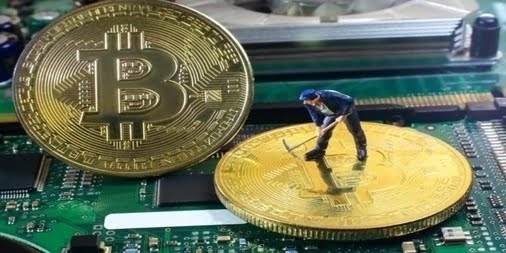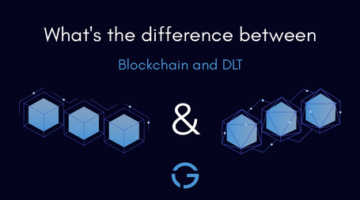What Would Happen to Bitcoin Miners After the Next Halving?

With more than 85% of bitcoin already mined, users in the crypto space are growing more concerned with the halving, expected to occur later this year in May. The hash rate keeps hitting all-time highs, and the halving will undoubtedly affect BTC prices. However, the primary issue of concern is what effect it will have on the miners. Over recent years, mining bitcoin has become less profitable for small scale miners. So, what impact will the third halving have on the miners? Will this be the end of small and medium bitcoin miners.
This article looks at the details of Bitcoin halving, its history, and what bitcoin miners should expect following this year’s halving.
What is Bitcoin halving?
Unlike fiat currencies that use a price increase model and can print extra units of money at will, bitcoin is deflationary. What this means is that fewer bitcoins will be made over time, and eventually, the supply will stop. It will make the currency more scarce and valuable over time but also more costly for miners to produce. The quantity of bitcoin is estimated to end in the year 2140. Bitcoin is limited to supply 21 million units by its built-in algorithm, no more than that amount can ever exist.
Bitcoin halving – created by a mysterious person or group using the assumed pseudonym ‘Satoshi Nakamoto’ – is an event where the block reward is reduced in half every four years (210,000 blocks). Cutting the rate by 50% not only reduces the amount of new bitcoin entering circulation every day, but it also diminishes the mining costs for obtaining the network. The decreased supply of coins could see prices of bitcoin rise if the demand remains strong.
As of this moment, bitcoin miners are given 12.5 BTC for each verified transaction, but that will change two months from now, reducing the block reward to 6.25 BTC.
There’s a good chance all of that made some sense. To explain bitcoin halving in a much higher deal, let’s begin with a process that’s a little bit closer to home:
History of Bitcoin Miners Rewards Through Halving Event
The first halving (reducing the miner’s block reward from 50 BTC to 25BTC per block) occurred in November 2012. At the time, one BTC was worth around $11, and the price began to climb drastically to a new mouthwatering $1,100 in 2013. A year since the halving and Bitcoin had grown 100 times, a rate never seen before.
Later, the price eventually fell to around $220 -$240 range, and it remained below $1,000 for the next three years.
The second halving (decreasing the miner’s block reward to 12.5 BTC per block) occurred in July 2016. The price of BTC stayed around $600 – $700 before skyrocketing to $20,000 in the great bull run of 2017. From anticipations from the first halving event, bitcoin dropped nearly to $3,000. In recent months, the bulls have done an excellent job by pushing the price higher, reaching $10,000 but failing to exceed resistance levels at the $14,000 mark. And now it’s currently at $10,400.
The Third Halving and What To Expect
As noted in the previous halving that occurred, the crypto space has matured considerably. The third halving (reducing the miner’s block reward to 6.25BTC per block), based on the assumption of 10 minutes per block, is set to happen in late May 2020.
There were different variables at work with each halving – this is important to note. In the first halving, no one had any real idea of what to expect. The rise in Ethereum in the second halving was a new factor that was not happening in 2012.
So what about the third halving? It’s not safe to be making predictions, but history always tends to repeat itself. Due to increased news coverage and the supply of new coins, it’s safe to say that the price may follow a similar pattern.
If you take away all the noise around bitcoin halving and reduce it to a simple takeaway from today’s history lesson is this: Bitcoin reward halving correlates with price volatility afterward.
What Would Happen to Bitcoin Miners After the Halving Period?
A bitcoin halving – using its blockchain software dictates the rate at which new bitcoins are created. The software requires miners to use computers in the network to compete to verify transactions and is rewarded with the number of new bitcoins when they can prove that the sales are valid.
With halving cuts miners’ reward by half, some orthodox economists have criticized mining as extravagant. After halving, some users may calculate that their mining activity will no longer be profitable due to costs such as electricity and hardware.
According to Coinrivet, Ramak J Sedigh, founder and CEO of Plouton Mining, says that the upcoming halving will force the small operators out of the market, except in the likely situation that BTC tops a new all-time high by the end of May. He added that you’re out if you’re not able to upgrade both your infrastructure to the 2500W miner and equipment to the 70+ TH/s or upcoming 5 3 NM miners with even higher TH/s.
Other users may quit mining if the price of bitcoin doesn’t rise to pay off. It will reduce the amount of processing power in the network.
However, the speed at which blocks are mined shouldn’t be affected as the software automatically adjusts the difficulty of verifying transactions to maintain a steady rate.
What Would Happen to Miners After All 21 Million Btc Are Mined?
In the future, when all 21 million bitcoins – maximum supply of bitcoins – have been supplied, miners will no longer receive new bitcoins for verifying blocks. However, users will continue to earn transaction fees as an incentive to verify transactions.
Are Transaction Fees Alone Enough to Reward the Bitcoin Miners?
Co-founder and CEO of the RockX digital asset service platform Alex Lam agrees. He says that in the long run, the bitcoin network will still be sustainable because transaction fees will be higher in each block as mining gets increasingly sensitive in the coming bitcoin halving. Users will have to pay enough to miners to ensure they don’t shut down, which would make the network less secure.”
Final Thoughts
As bitcoin matures, it’s essential to keep in mind that the bitcoin network itself is likely to change considerably between now and then. Mining is expected never to be as profitable as it once was. For those of us who are new to digital assets, the information provided here is not investment or financial advice. First, consult with a licensed professional for advice concerning your specific situation.
Relevant news

What Differentiates the Blockchain from Distributed Ledger Technology?
Blockchain tech was developed to timestamp digital documents so that it’s virtually impossible to backdate…

The Simpsons jokes about “Useless, Energy-Gobbling” Crypto
The official Bitcoin Twitter channel promoted a video clip from the Simpsons which they claim…

ASIC Gives An Australia Fintech Firm the Go-ahead to Launch Bitcoin Fund
On January 20, 2020, an Australia financial regulator announced that it had given its approval…

Nuts and Bolts of the Recent Developments in the Lightning Network and User Experience
With Bitcoin scalability problem getting out of hand, the Lightning Network seems to be the…

Airbnb Now Bookable with Bitcoin and Lightning Network Through Fold App
On November 12, 2019, Bitcoin payments firm Fold announced that it now supports home-sharing giant…

“Why I left Bitcoin” – All the best answers
Recently a Twitter conversation went viral among our Crypto Twitter friends, namely the question of…
